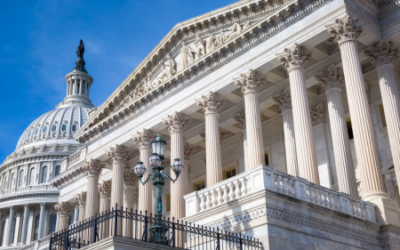Municipal and county leaders throughout the country are in a bind. Coming off a year scarred by devastating multi-billion-dollar natural disasters, they are grappling with historic rebuilding efforts…while also dealing with the demands of dozens of other critical issues.
These public officials were already facing growing budget gaps, aging technology, critical infrastructure needs, a continual pressure to do more with less because of population growth and meeting constituent demands for even more digital assistance. Now, they must take on another task – dealing with historic rebuilding oversight responsibilities. That last task has recriminations that threaten to be ruinous to a region if there is any misstep.
What most people don’t realize is this – any expenditure for rebuilding that falls into the category of “unauthorized” is subject to “claw back” by the federal government. That is problematic because federal rules often change with little notice. Overseeing federal disaster and rebuilding funding is extremely dangerous. It’s entirely too easy to run afoul of the rules.
Municipal and county resources are stretched to the breaking point and budget constraints keep officials from performing adequately in any area. The country is actually lucky that more public officials are not jumping ship.
However, in the midst of calamity, something surprising is happening. A new paradigm is evolving and innovation is at its center. Leadership at the local levels of government is being lauded almost everywhere.

Rumors are prevalent that President Trump has new thoughts about how to fund the country’s aging infrastructure. His administration explained recently that local and state government officials will need to come up with at least 80 percent of the funding for infrastructure projects and then apply for federal funding assistance to cover the last 20 percent. That will be a monumental task for many and an impossible task for some.
Congress, likely realizing the difficulty state and local officials will face trying to come up with the required funding, passed a tax reform bill that preserved Private Activity Bonds (PABs). The bill not only left the program in place, but also increased the volume cap on these bonds by 5.2 percent. Financial experts say the loss of PABs would have cut the sale of tax-exempt bonds by tens of billions of dollars this year and that would have caused the cancellation of many infrastructure projects.
Between Hurricane Irma and Hurricane Harvey in 2017, coastal cities in Texas and Florida suffered multi-billion-dollar damages and losses. As the affected cities and counties rebuild, they are focused on resilient infrastructure. Projects in the planning include electric grid expansions, flood protection initiatives and sustainable construction of all types. The National Oceanic and Atmospheric Administration recently announced that weather disasters – wildfires, three strong hurricanes, hail, flooding, tornadoes and drought – cost the nation a record high $306 billion in 2017.
Former U.S. Transportation Secretary Anthony Foxx has been very vocal about what is needed in 2018. He advocates for increasing funding for the new Infrastructure for Rebuilding America (INFRA) program that provides direct federal investment in infrastructure. It will be important to watch what Congress does with this program.
Whatever happens, it seems apparent that collaboration between public and private sector partners will be required. Local government leaders will be forced to take a bold and aggressive approach to innovation. But, then, that’s not particularly new – these people have long been innovators. All bets are on them to prevail again in 2018.
SPI’s government market research shortens sales cycles and allows your sales team to focus on what they do best…selling. Learn more about their capabilities by contacting them today.






